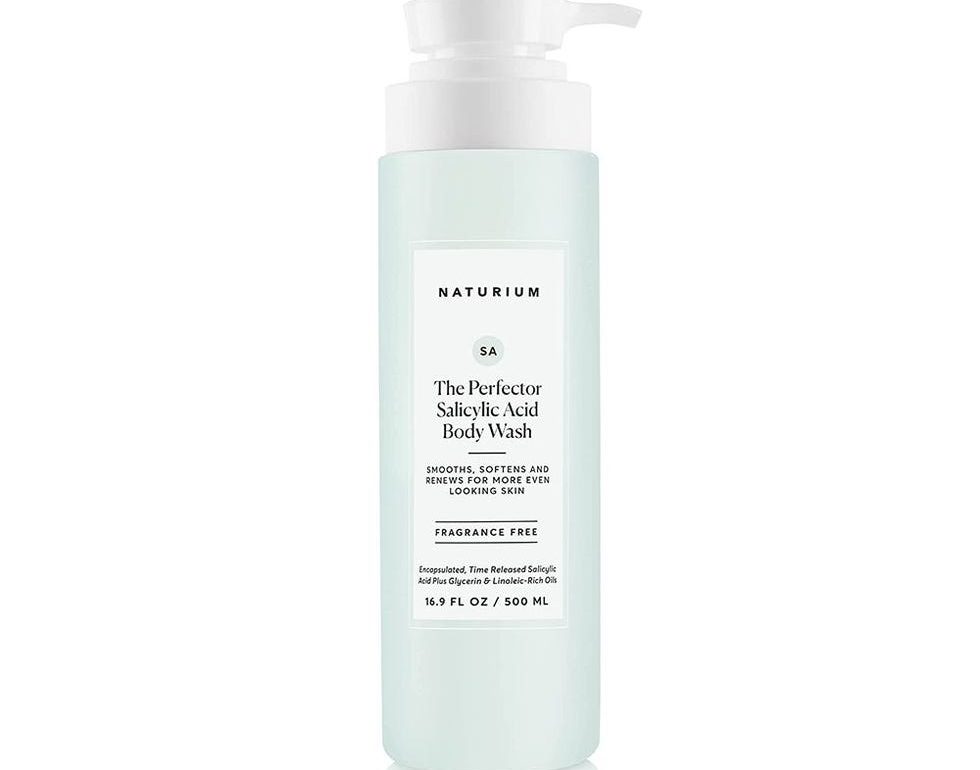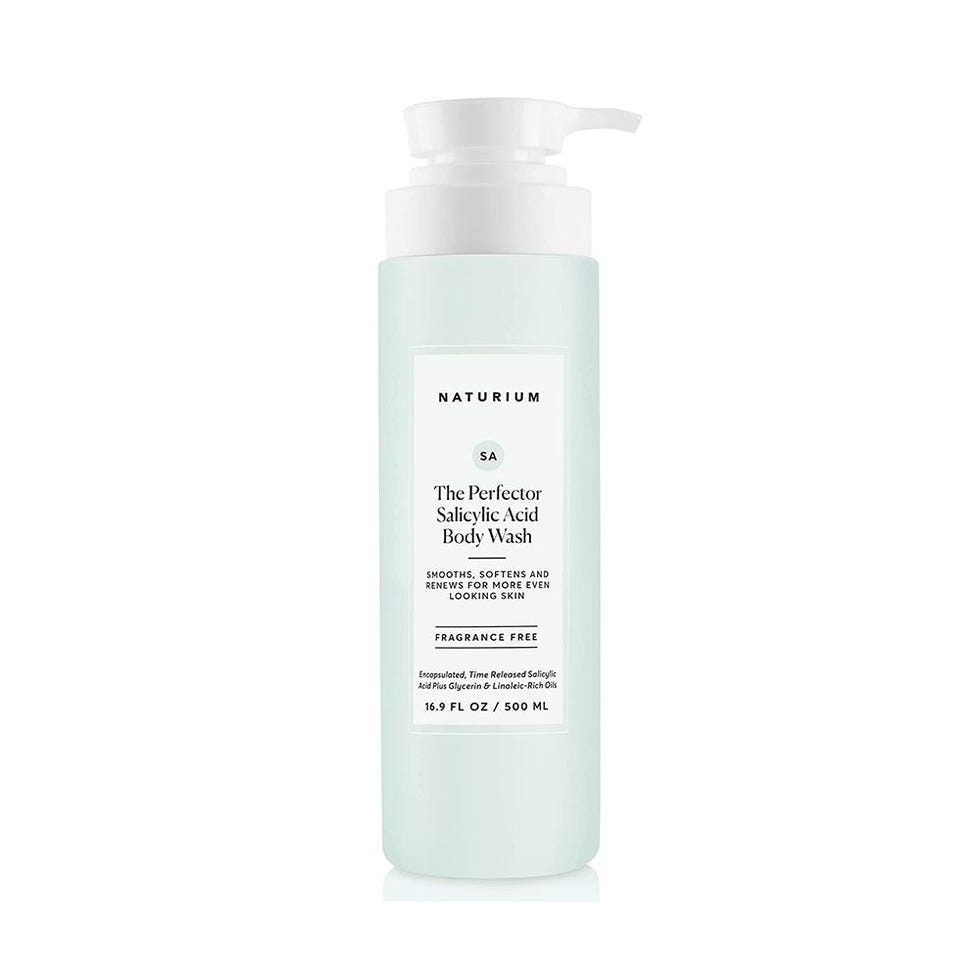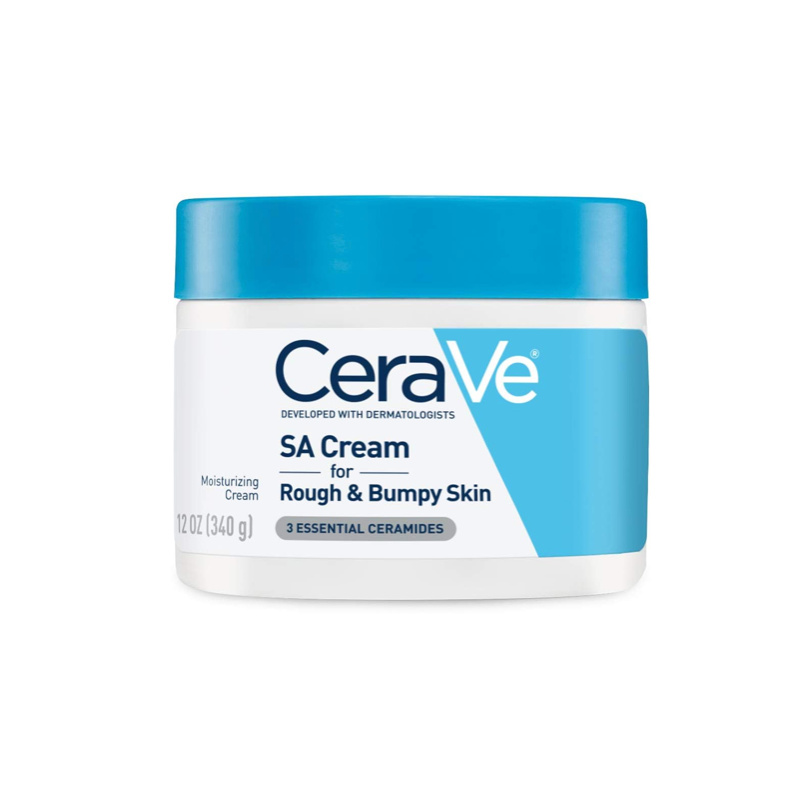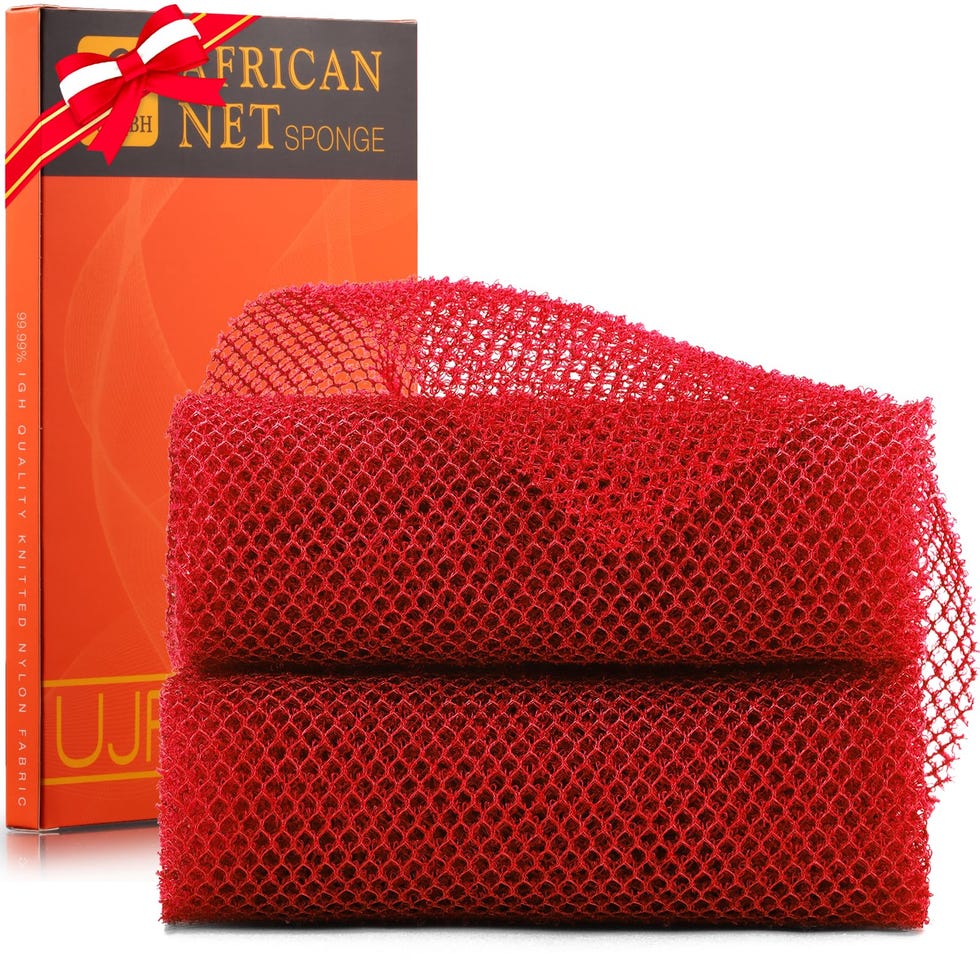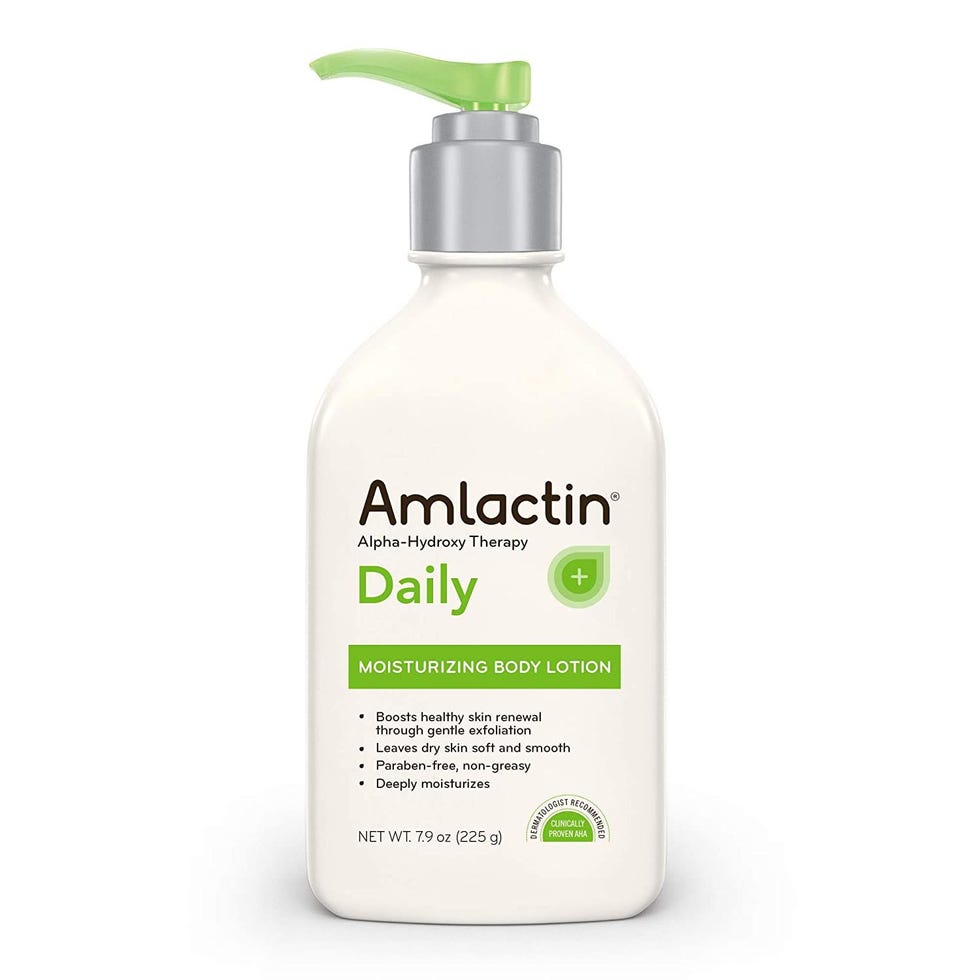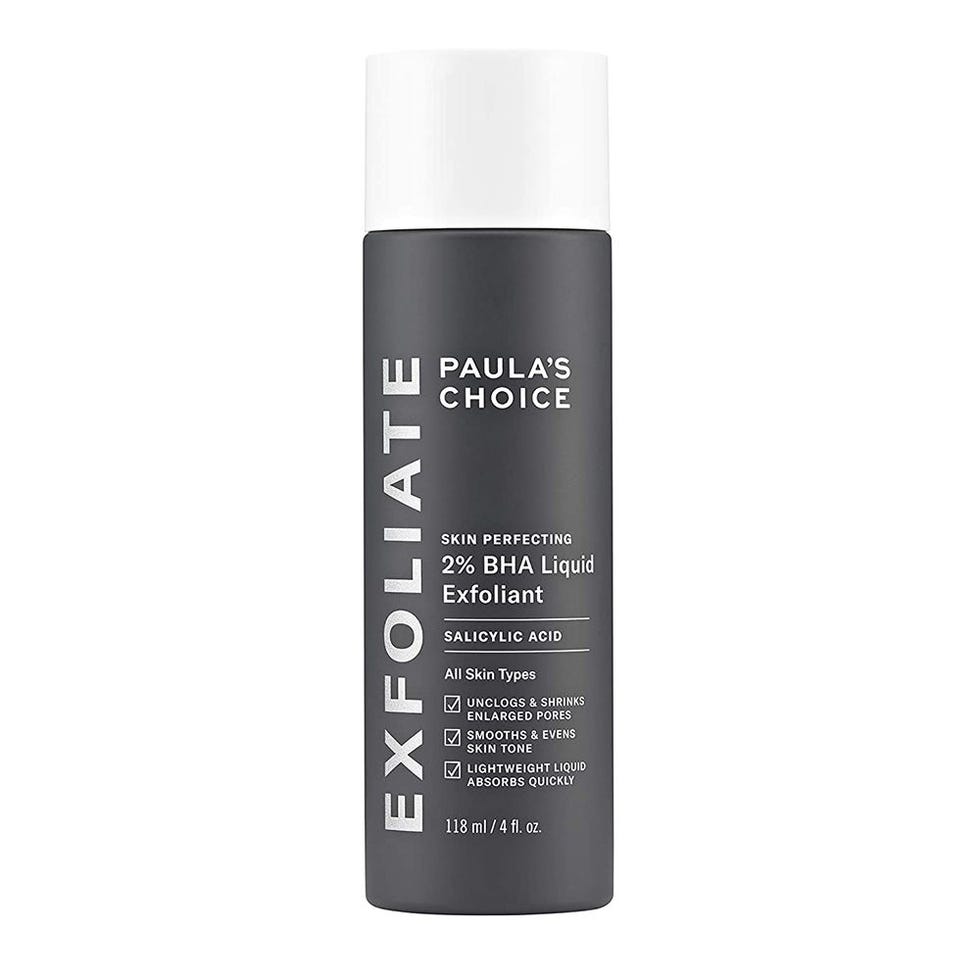You’re either part of the crowd eagerly embracing the latest fruit-themed beauty trends, or wishing they’d disappear altogether. From Hailey Bieber’s viral strawberry girl makeup to the fruit-infused skin care craze led by brands like Glow Recipe (Watermelon anything, anyone?), fruit-forward beauty has taken over in recent years. But when it comes to fruits and skin, there’s one we’d all rather leave behind: strawberry skin.
Strawberry skin (otherwise known as keratosis pilaris) takes its name from the fruit and “refers to the appearance of small dark spots on the legs that resemble the seeds on the surface of a strawberry,” says Dr. Dara Spearman, a board-certified dermatologist and founder of Radiant Dermatology Associates. As the warmer weather rears its head, encouraging us to wear less and go out more, skin conditions like strawberry skin, cellulite, or dark spots become more apparent than ever. Luckily, a bevy of formulas can help treat all these conditions, especially in any place where strawberry skin emerges.
But how do you get the smooth, “seedless” skin of your dreams? With the help of a dermatologist and this detailed guide to treating strawberry skin. Ahead, we break down what it is, how to treat it, and the best products to give you visible results fast.
How can I tell if I have strawberry legs? What causes it?
Because the skin condition looks similar to the skin of a strawberry, look for tiny, darker spots lodged in the skin. “These spots are often visible in the pores or hair follicles and can be caused by a few different things, clogged pores, shaving irritation, keratosis pilaris, or ingrown hairs. It’s more noticeable on people with lighter skin tones, but can happen to anyone,” Dr. Spearman explains.
What ingredients are best for treating it?
The best ingredients to treat strawberry are those that gently exfoliate, as well as those that “unclog pores and calm inflammation,” Dr. Spearman shares. When it comes to exfoliating anywhere on your body, AHAs (alpha hydroxy acids) and BHAs (beta hydroxy acids) are your best bet. “Salicylic acid (a beta hydroxy acid) helps deeply exfoliate inside the pores, while glycolic acid and lactic acid work on the skin’s surface to smooth rough texture,” she adds.
Of course, over-exfoliation can sometimes lead to dryness, so in that case, Dr. Spearman says to use the ingredient urea, “another gentle exfoliant that also hydrates.” If, in addition to strawberry skin, you’re noticing ingrown hairs, this is where retinol comes in. “Retinoids can help with cell turnover and prevent hairs from getting trapped,” Dr. Spearman says.
Will I have it permanently, or can it fade away over time?
“Strawberry legs are very treatable and often improve significantly with the right routine,” she shares. While it’s not a permanent skin condition, it does require the right tools, technique, and a whole ‘lot of patience to see results. “Consistency is key. Exfoliation, proper shaving techniques, and keeping the skin hydrated can make a big difference. In some cases, especially if it’s linked to keratosis pilaris, it may require long-term maintenance,” she explains.
What are the best products for treating strawberry skin?
Why Trust ELLE Beauty?
As a leading publisher of fashion, lifestyle, and beauty content, ELLE.com is committed to highlighting the best products in various categories by personally testing the latest and most innovative products, interviewing countless experts, and vetting customer-loved items. For this piece, beauty commerce editor Nerisha Penrose consulted a dermatologist to determine the best products and practices for treating strawberry skin.
More ELLE Beauty Essentials
The Best Products to Treat Keratosis Pilaris on Amazon
The Best Exfoliating Gloves for Super Soft Skin
The Best IPL Hair Removal Devices for Smooth Skin
The Best Cellulite Creams Reviewers Can’t Shut Up About



